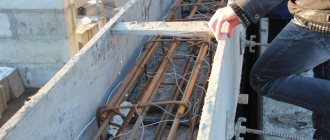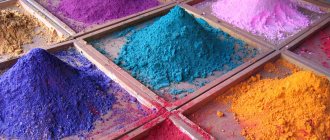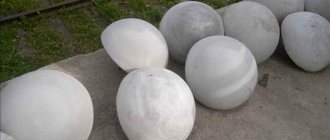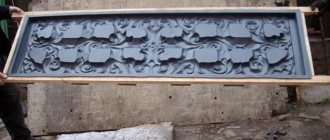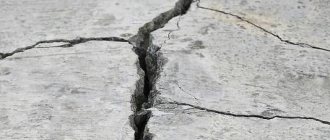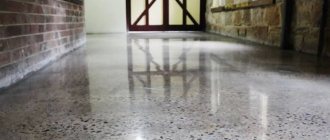Outdoor vases (often called flowerpots) greatly decorate the area near a dacha or private cottage. These unique flower beds can be installed anywhere: near benches and gates, on stairs and paths.
You can buy such a vase (but it is quite expensive), or you can make it yourself. Moreover, from quite accessible materials and a special solution.
Product Features
Concrete vases can rightfully be called a successful decorative technique with which you can aesthetically transform your garden area. This type of decor very clearly characterizes the taste preferences and respectability of the owner of the estate.
Simple, practical and tasteful - concrete products on your site
Most landscape design specialists agree that to make stone flower bowls it is necessary to use the raw materials that are closest to natural. This is important so that the so-called concrete pots have an aesthetic appearance and fit harmoniously into the overall picture.
It is worth noting that making stone flowerpots for the garden with your own hands is not an easy task. In view of this, to create such landscape elements, special attention must be paid when choosing the appropriate material. Most often this is concrete or cement mortar.
Positive characteristics of concrete products
As mentioned above, decorative elements such as concrete flowerpots have always been in great demand among homeowners with a personal plot. And all thanks to many positive factors.
For example, it is worth saying that the presence of such garden flowerpots made of concrete on the site will always come in handy. With their help, you can advantageously delimit the garden area, combining the elements of space into a single whole.
Quite often, stone flower vessels are used to decorate private households, as well as to transform city parks, alleys, recreational areas, and public or cultural facilities. Also, the positive features of concrete flower beds include the affordability of the material and the ease of caring for the product. Stone forms are quite practical to use, as they have fire-resistant properties, are frost-resistant, are not afraid of moisture, and have an unlimited shelf life. Moreover, the raw materials intended for manufacturing make it possible to translate even the most complex design ideas into reality. Variations of concrete products can come in different sizes and unexpected shapes.
Concrete as decoration
Types of concrete flower girls
Today it is not difficult to purchase a ready-made concrete product created as part of industrial production. Outdoor flowerpots made of concrete are no exception. Most often they are produced according to a typical factory design and consist of a bowl, a support leg and a base. They can be from thirty to sixty centimeters in height. However, buying this decorative element is not always the best option, especially for a demanding owner, because the main characteristics of such vases are unoriginality, low stability, and unreliability. In view of this, there is a need to create concrete flowerpots with your own hands, which would be unique, original, and creative.
Creativity in everything!
Depending on the target direction, garden flowerpots made of concrete can be of different configurations, depths and thicknesses. For bouquets of artificial plants, you can make a vase of small depth, as for natural representatives of the flora, in this case, the deeper, the better.
As for the external appearance of the vase, the main criterion here will be only the personal preferences and impulse of the customer’s imagination.
To create the desired product with your own hands, you can use old glass or plastic bottles, various boxes, and sometimes even a ball will do. An important role is played by the fact which form is needed in the end. The concrete solution easily takes on the intended shape, and when it reaches its standard, it is distinguished by its integrity and special strength.
What you need for creativity
The set of materials and tools will differ depending on the chosen method of making a flowerpot.
Solution
The main ingredients for preparing the solution in all cases are grade 400 or 500 cement, sand and water. Their proportions vary depending on the consistency needed for the job. As a rule, they take 2 parts cement and 3 parts sand, and the density is set by adding more or less water.
For example, to pour into a mold, the solution should have the usual consistency of thick sour cream. For sculptural modeling, a more stable, non-flowing mixture will be required, and a vase made of cement and fabric on a bucket can only be achieved using a liquid solution that can completely saturate the fabric.
The consistency of the solution is selected in accordance with the manufacturing technology Source buy-brick-moscow.rf
The smaller the size of the pot, the more uniform the sand should be, so it is sifted to remove large inclusions. And vice versa: it is better to make large containers with thick walls from concrete with a large filler - gravel or crushed stone. Expanded clay is also suitable, which will also reduce the weight of the product and make it more mobile.
See also: Catalog of companies that specialize in the reconstruction and rebuilding of houses
Available materials
It is not at all necessary to have special tools and ready-made molds to make garden or indoor vases from cement. If you have empty plastic cylinders and canisters, old buckets and basins, unnecessary glass jars and bottles, they will all serve as molds for future products. In addition, unique shapes can be made from cardboard, plywood, foam plastic or scrap boards, creating original frames according to your own drawings and sketches.
Thick rubber gloves, worn-out shoes, bags, suitcases, balls, children's toys, old towels, bags, plastic boxes, baskets can also be used.
Decorative flowerpots from old things Source segodnya.ua
In addition, you will probably need the following auxiliary materials:
- polyethylene film;
- wire;
- plastic or metal mesh for reinforcing large products;
- short pieces of plastic pipes or wooden dowels for making drainage holes;
- oil or other lubricant for treating the mold before pouring concrete.
To prevent the solution from sticking to the mold, you can spray it with WD-40 Source userapi.com
Flowerpots and general design
Of course, if concrete flower beds or flower beds are considered to be an element of decor aimed at transforming a personal plot, then this is precisely the role they should fulfill. In view of this, when designing the landscape design of any site, it is important to take into account the size of the territory itself, the parameters of the concrete product, the presence and quality characteristics of vegetation. Everything should be in harmony and consistent with the overall direction and design. Concrete vases will bring satisfaction to the residents of the house only if they are properly made and properly placed on the site.
For example, it would not be entirely appropriate to place bulky structures in secluded places intended for relaxation; at the same time, a miniature product at the end of a long alley would look unfortunate (or rather, unnoticed). To achieve the desired result, it is important to think through and maintain the necessary correspondence between the proportions of the future product and the territory on which it will be located.
The style of flower containers can range from unchanging classics to controversial modernity. Such concrete vases can be painted in various shades that harmonize with the overall design. They can be regularly refreshed by tinting them without harming the product itself. It is advisable to give preference to shades that are not brighter than the flowers themselves growing in the flowerbed. The best option would be discreet, soft colors and shades: beige, brown, white, gray, brick, etc.
Concrete composition
In order to have a general idea of how to make a concrete flowerpot with your own hands, you need to take into account many different factors and recommendations. For example, what kind of concrete to use to create a flower product.
If we are talking about outdoor flowerpots, then to create them you can use ordinary concrete mortar, which contains cement and sand. This is an ideal solution in this case, since the outside of the stone vase will look monochromatic and have a gray tint. In general, it will look quite stylish, discreet and will not distract attention from the flower arrangement.
Although such flowerpots look quite good, however, , etc., are more attractive. The main feature of this material is that it contains not only the main components (sand and cement), but also polymer additives, crushed particles of natural stone, some of which have coloring components. Products made from such raw materials are smoother, more interesting, and contain elements of various minerals. The appearance of the vase will directly depend on the chosen composition.
Master class: how to make an unusual flowerpot (video)
Types and advantages of cement vases
The plasticity of the cement mortar and the high strength of the hardened material make it possible to create from it products of various shapes and sizes, from modest and simple pots for succulents to huge park flowerpots in the form of an open flower on a high leg and stand. And between them are pots, flowerpots and floor vases for indoor plants, garden flower beds, sculptural forms with recesses for planting flowers, solid fences in the form of a container without a bottom for installation directly on the ground.
But cement vases differ not only in size and appearance, but also in the quality of the solution, the presence or absence of reinforcement, and methods of manufacturing and decoration. There are a lot of them known, and designers often use them. But anyone who is not afraid to imagine and work with their hands can come up with their own version or improve the one they like.
Examples of simple outdoor flowerpots Source birchhilldam.com
Any plants - both indoor and garden - feel much better in a container made of concrete rather than plastic or metal. It does not heat up so much under the sun and retains moisture in the soil well. These flowerpots are especially convenient outdoors:
- they are durable, resistant to mechanical stress - shocks, scratches;
- concrete does not corrode and is not destroyed by humidity, frost, or sunlight;
- In each separate decorative container you can pour a soil mixture of the composition that is necessary for the plant grown in it;
- flowerpots, if they are not too bulky and heavy, are mobile and allow you to modify plant compositions on the site, transfer individual specimens to a warm place when cold weather sets in;
- they can be given exactly the shape that best fits into the landscape design.
This composition is suitable for a site in a rustic or eco-style Source kontakt-keramika.ru
The easiest way to make flowerpots with your own hands is from cement and fabric, and the most difficult to make are sculptured products, but this technique allows you to create the most interesting and unusual containers from antique amphorae to animal figurines.
Shape selection
As already noted, the advantages of concrete are that it can be poured into any form, which may consist of different materials. The only condition for the form is moisture resistance for 5 hours. For this purpose, you can even use thick packaging cardboard, having previously glued it well and secured it with tape. Its advantage is that it can be used to make almost any shape, but only for small flower girls.
Step-by-step guide on how to make a concrete vase
To create a vase, you can also choose a plastic product as a form. These can be deep plastic plates, water bottles, or other plastic containers. Another great option is plywood or wood.
It is worth noting that the design of a concrete planter requires two forms: internal and external. The first, accordingly, should be slightly smaller in size than the second. The dimensions of the internal shape directly depend on the parameters of the intended flowerpot. However, regardless of the overall size of the flower bowl, it is important to remember that the thickness of its wall should not be less than 3 cm. The inner form is inserted into the outer one in order to create a place for planting future flowers.
To create such a recess where plants will be located, it is better to choose a round-shaped object; balls or bowling balls are an excellent alternative.
Do it yourself
Let us describe in more detail the process of making a flowerpot using each of the three methods.
Concrete product
Basic method
The easiest option is to take two boxes as a template. One is smaller, the other is larger. The gap between their walls will be equal to the thickness of our future vase.
The smaller box is wrapped in mesh and then inserted into a larger box, onto the bottom of which cement is first poured with a layer of three to five centimeters.
- Now we prepare the solution by mixing cement, sand and peat (or expanded clay).
- Add enough water so that you get not a liquid mass, but a mixture that molds well.
- Fill the space between the boxes with this mixture and leave for a couple of days.
- After that, we take out the smaller box (after checking whether the solution has hardened), and we cut the larger one and also remove it.
Important nuances
If you don't want to drill the necessary drainage holes in solid concrete (which would require a special stone drill bit), you can do it easier. Before pouring the solution, insert several tubes with a height equal to the thickness of the walls and bottom (usually about five centimeters).
After cleaning the sharp edges of the product with a stiff brush, begin decorating. For example, painting. We sand down all the uneven surfaces well and cover the surface with durable paint for exterior use. If you want to get a product of a light shade, then first apply a layer of white paint.
By the way, you can color the solution itself by adding iron oxide pigment to it. It has good durability, but it has a small selection of shades.
Cement sample using Hungarian technology
- We clear a flat place on the site and put a sheet of plywood there (can be replaced with roofing felt, thick polyethylene, tin, and so on).
- Pour a mixture of sand and cement into the center (from three to one to five to one), stir well, lay out in a heap and make a hole on top.
- Slowly pour water into this hole until you get a thick mixture suitable for modeling.
- Now let's act like potters. We stick a metal rod into the center, to which we attach the first template on wire loops - for the inner walls.
- We begin to rotate it, resulting in a hemisphere. Cover it with thin polyethylene, and then apply the next layer of the mixture, smoothing it with a trowel.
- Then there will be a reinforcing layer (a mesh of plastic or metal), and again a layer of cement mixture. It's time to use the second template, which gives the look to the outside of the vase.
- After which the rod can be removed (by the way, a drainage hole is formed), and the vase can be allowed to dry for five days to a week. At this time, it is useful to apply damp cloths to it.
Sometimes, to speed up hardening, gypsum is used instead of cement mortar (three to four parts of lime mortar plus one part of gypsum). To avoid lumps, first add gypsum to the water, then add lime mortar.
Plaster vases
Method No. 1
- The selected form (box, jar, bucket) for a concrete flower vase is placed on a plane covered with oilcloth.
- The glossy surface (if present) is sanded for better adhesion.
- Wrap the surface with plaster bandages (or regular bandages or strips of fabric soaked in a sour cream-thick gypsum solution).
- After the walls reach the required thickness, the workpiece is placed to dry.
You can do it easier and faster, without lengthy wrapping of bandages. Take a piece of any dense fabric (knitwear is well suited for this purpose) and fasten it to the form. Using glue or tailor's pins. Then apply plaster (preferably decorative), diluted to a liquid consistency, in several layers. Let it dry and decorate.
Method No. 2
Another way:
- We take a plastic ten-liter bucket (we’ll take it out later) and braid it with wire, making a frame.
- We cover this frame inside (and then outside) with strips of fabric soaked in a gypsum solution of sour cream thickness.
- We lay the fabric until the walls of the desired thickness are obtained.
- Then we dry it (if the walls are two centimeters thick, the process will take twelve hours) and decorate.
You can simply paint the plaster product (first by applying a layer of white acrylic paint for the primer, then any paint of your choice). Before painting (or varnishing), you can glue on lace (it gives a very beautiful effect), buttons, and small twigs. Acrylic varnish intended for outdoor use will provide protection on top.
The following video will teach you how to make a highly durable concrete vase:
Manufacturing process
An important condition for starting to work with concrete is temperature conditions (preferably +20) and high air humidity. To harden, the future product should be placed in a shady place.
The consistency of the cement mortar should not be too liquid, but not very thick.
When working with concrete, you should use gloves to avoid damaging the skin of your hands.
In order to be able to easily remove the inner mold at the end of the work process, it must first be lubricated with some kind of solution. For this purpose, you can use a non-stick product (spray) used in cooking. It is absolutely harmless and quite effective. There are also special solutions for concrete. You can also use machine oil or universal grease VD-40. Both forms need to be processed: small (outer coating) and large (internal coating). Next, you can pour concrete in layers, leveling it. First, the base of the flower vessel is poured, after which its walls are erected. To create a drainage system, you can use small metal tubes, also pre-lubricated. They must be installed under the bottom of a small form.
The form filled with concrete must be covered with polyethylene and left until completely hardened, for about 24 hours. After this, the future vase should be dipped in a tank of water and left for 10 days. Next, you can begin the most enjoyable process - planting the planned flowers.
Unusual flowerpots with your own hands (video)
Methods for making cement flowerpots
Each of the technologies described below will allow you to create exclusive products, unique in shape and decor.
Method 1 - from fabric
Cement and fabric vases are the easiest to make. You need to prepare any container of a suitable size; it can even be full of holes, as it will only serve as a temporary basis for shaping. It is better to choose dense fabric, as it will become a reinforcing frame for the future flowerpot, ensuring its strength. This could be a terry towel, an old tablecloth or bedspread, burlap, or jeans.
- The fabric for fitting is placed on a container turned upside down.
- Folds are formed, excess is cut off, and holes for drainage are carefully cut out at the bottom of the flowerpot.
- Prepare a liquid solution from 1 part cement and 2 parts sifted sand.
- The fabric is soaked in the solution until completely and evenly soaked.
- Then they are again thrown onto the container covered with film and laid in folds.
Stages of making flowerpots from fabric Source waysi.ru




